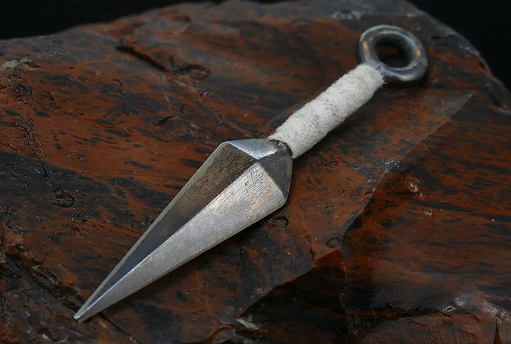Best Kunai Knife

Hey there, fellow knife enthusiast! Ever been fascinated by the legendary kunai knife? Used by ancient ninjas and seen in numerous movies and anime, this knife is more than just a cool relic—it's steeped in history and still finds its way into modern toolkits. Ready to embark on this sharp journey? Let's dive in!
History of the Kunai Knife
Origins
Kunai knives weren't always the iconic throwing weapons we see in pop culture. In reality, they began as farming tools in ancient Japan. Imagine tilling your garden with a kunai! Sounds wild, right?
Evolution over time
Over time, as situations demanded, the humble kunai was transformed into a versatile weapon by ninjas. These discreet warriors found it perfect due to its simplicity, durability, and multi-functionality. And of course, it became a symbol of their stealthy arts.
Types of Kunai Knives
Traditional
The classic kunai had a leaf-shaped blade and was usually made of iron, not steel, since it was more for utility rather than combat. It had a wrapped handle and a ring on the pommel end for attaching ropes or chains.
Modern variations
Foldable kunai
A modern twist to the classic! These kunai are designed for portability and discreet carry. Think of them as the Swiss army knife of the kunai world.
Throwing kunai
Specifically balanced and designed for throwing, these kunai are a favorite for sport, recreation, and some modern martial arts practices. Ever thought about joining a kunai throwing league?
Uses of the Kunai Knife
In ancient Japan
Besides farming, kunai were useful for digging holes, climbing, as a makeshift spear, and even for prying. Imagine a multitool, but in ancient Japan.
In modern times
While we don’t use them for farming anymore, the kunai knife finds its place in martial arts, collection showcases, and even some outdoor activities. It's amazing how a tool so old still carves its niche, huh?
Choosing the Right Kunai
Material considerations
Modern kunai are made of a variety of materials. Stainless steel is popular due to its rust resistance and sharpness retention. But, always ask yourself: is this kunai for show or actual use?
Size and weight
While authentic kunai had a standard size, modern variations come in all sizes. A heavier kunai might be better for throwing, but for everyday carry? Maybe something lighter and foldable!
Caring for Your Kunai Knife
Cleaning and maintenance
After each use, it's vital to clean your kunai to maintain its sharpness and prevent rust. A little oil and a soft cloth go a long way.
Proper storage
Store your kunai in a dry place. For those with leather wrappings, ensure it’s aired out to prevent mold. After all, a well-maintained kunai is a happy kunai!
Concluding Thoughts
The kunai knife, while an ancient tool, still captures the imagination of many. Whether you’re a collector, martial arts enthusiast, or someone looking for a unique utility tool, there’s a kunai out there for you. So, are you ready to add a kunai to your collection?
FAQs
- What were kunai originally made of?
- Originally, they were made of iron as they were primarily used as farming tools.
- Are all kunai knives sharp?
- No, some are designed primarily for display or sport throwing and may have dulled or rounded edges.
- Is it legal to own a kunai?
- Laws vary by country and state. Always check local regulations before purchasing or carrying a kunai.
- How do you throw a kunai knife?
- Throwing a kunai requires practice and proper technique. Many martial arts schools offer training on this.
- Can I use a kunai for self-defense?
- While it can be used for self-defense, there are more effective and legally acceptable tools available. Always prioritize safety!
Related Articles:
Affiliate Disclosure:
I earn from qualifying purchases. This means that when you click on certain links on our website and purchase through Amazon, we may receive a small commission at no additional cost.